
Afolabi, M. A., Xiao, D., & Chen, Y. (2023). The Impact of Surface Chemistry and Synthesis Conditions on the Adsorption of Antibiotics onto MXene Membranes. Molecules, 29(1), 148.
This study investigates how synthesis conditions affect the properties of MXene, a 2D nanomaterial, and its ability to adsorb antibiotics. By comparing MXenes produced with different etchants (HF, HCl/HF, LiF/HCl), it was found that LiF/HCl creates MXenes with superior morphology and adsorption performance, primarily due to electrostatic interactions and hydrogen bonding. This suggests that tailoring MXene’s surface chemistry through synthesis can enhance its environmental application, especially for removing antibiotics. Learn more
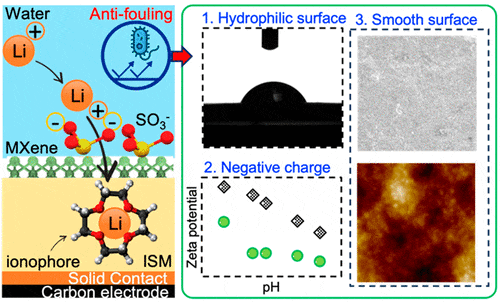
Huang, Y., Afolabi, M. A., Gan, L., Liu, S., & Chen, Y. (2023). MXene-Coated Ion-Selective Electrode Sensors for Highly Stable and Selective Lithium Dynamics Monitoring. Environmental Science & Technology, 58(2), 1359-1368.
This study introduces a novel MXene composite membrane with poly(sodium 4-styrenesulfonate) (PSS) for lithium ion selective electrodes, enhancing selectivity and durability in lithium monitoring. The MXene-PSS Li+ sensor shows improved electrochemical performance, with a superior detection slope, lower detection limit, faster response, higher selectivity, and reduced impedance. Tested in real wastewater, it maintained accuracy with less than 10% error over 14 days. This advancement suggests MXene nanosheet coatings could revolutionize sensor technology, especially for environmental monitoring and sustainable energy applications. Learn more
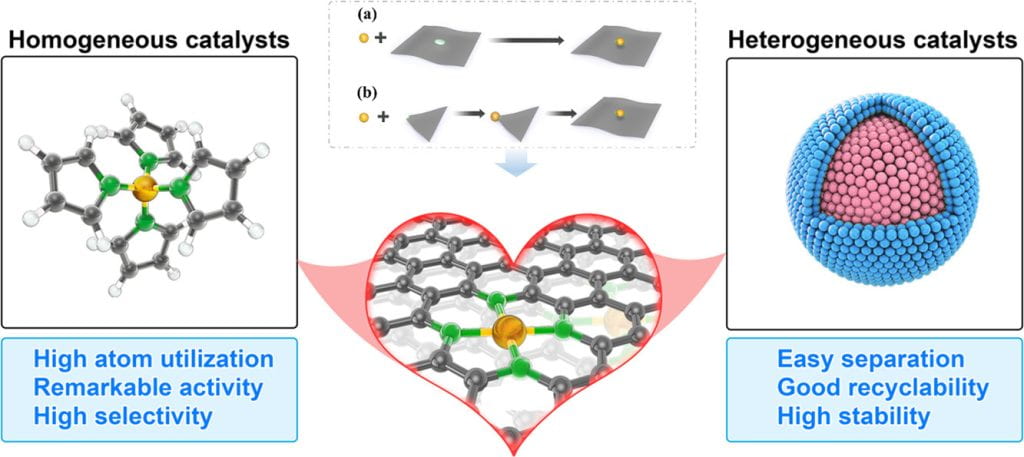
Hu, X., Zhou, D., Wang, H., Zhang, W., Zhong, H., & Chen, Y. (2023). Preparation and characterization of M1-Nx-Cy based single atom catalysts for environmental applications. Chinese Chemical Letters, 34(8), 108050.
This review highlights single atom catalysts (SACs), specifically M1-Nx-Cy based SACs, where single metal atoms are stabilized in nitrogen-doped carbon, offering high reactivity, atomic utilization, and selectivity in catalysis. It covers fabrication methods, interaction mechanisms, characterization technologies, and environmental applications, including gas management and water purification. Future challenges and opportunities in preparation, mechanisms, and applications are discussed, emphasizing SACs’ potential in addressing environmental pollution. Learn more
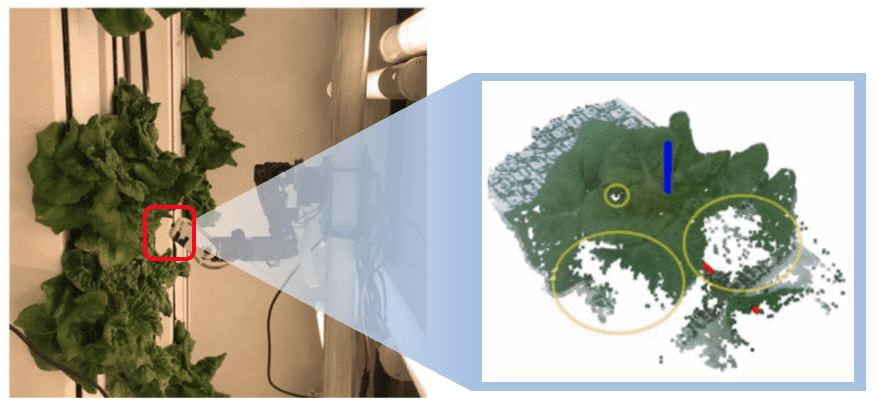
Chen, G., Muriki, H., Sharkey, A., Pradalier, C., Chen, Y., & Dellaert, F. (2023, May). A Hybrid Cable-Driven Robot for Non-Destructive Leafy Plant Monitoring and Mass Estimation using Structure from Motion. In 2023 IEEE International Conference on Robotics and Automation (ICRA) (pp. 11809-11816). IEEE.
The study introduces a new hybrid cable-based robot designed for medium-throughput and accurate monitoring of plants in vertical hydroponic farms. This robot combines the benefits of cable-driven mechanisms with a flexible arm to capture diverse images of plants. Using this system, researchers can better understand plant growth by estimating properties like plant mass, outperforming traditional overhead methods. The technology offers promising applications in agriculture and research settings. Learn more

Igou, T., Zhong, S., Reid, E., & Chen, Y. (2023). Real-Time Sensor Data Profile-Based Deep Learning Method Applied to Open Raceway Pond Microalgal Productivity Prediction. Environmental Science & Technology.
The study introduces an image-based deep learning technique to predict productivity in Outdoor Open Raceway Ponds (ORPs) used for microalgal biomass synthesis. Traditional methods struggle with fluctuating environmental conditions, requiring extensive measurements and calibrations. The new method utilizes images of sensor parameters like pH, dissolved oxygen, and temperature, which can be remotely monitored without physical contact with ORPs. Applied to the largest publicly available ORP dataset, this method notably surpassed traditional machine learning approaches in performance. The findings suggest that ORP productivity can be efficiently predicted using this remote monitoring method, offering a cost-effective solution for microalgal production forecasting. Learn more

Reid, E., Igou, T., Zhao, Y., Crittenden, J., Huang, C. H., Westerhoff, P., Rittmann, B., Drewes, J., & Chen, Y. (2023). The minus approach can redefine the standard of practice of drinking water treatment. Environmental Science & Technology, 57(18), 7150-7161.
The study presents the “Minus Approach,” a novel set of practices and technologies aimed at mitigating the chronic risks associated with disinfection byproducts (DBPs) and known, unknown, and emerging contaminants (KUECs) in chlorinated drinking water. Unlike the conventional “Plus Approach” that relies heavily on chemical treatments, the Minus Approach focuses on bank filtration, biofiltration, adsorption, and membranes to biologically and physically remove harmful substances. By using ultraviolet light and minimal chemical disinfectants, it ensures water safety while reducing the concentrations of KUECs and DBPs, offering a more sustainable method for water treatment. Potential barriers to its adoption are also acknowledged. Learn more
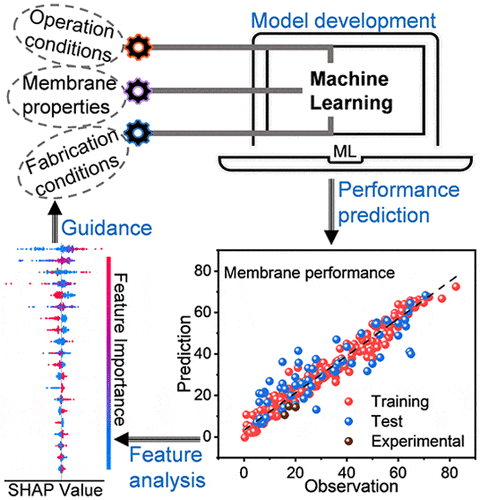
Gao, H., Zhong, S., Dangayach, R., & Chen, Y. (2023). Understanding and Designing a High-Performance Ultrafiltration Membrane Using Machine Learning. Environmental Science & Technology.
Ultrafiltration (UF) membranes are vital for water treatment. This study used machine learning to correlate membrane performance with fabrication conditions. The most influential factor affecting performance was the loading of nanomaterial additives (A_wt %) at amounts over 1.0 wt %. Polymer content, molecular weight of the pore maker (M_Da), and pore maker content also significantly impacted performance, with M_Da being more crucial than M_wt %. The machine learning model’s analysis elucidated the effects of fabrication conditions on membrane properties like pore size and porosity. This data-driven method assists in designing efficient UF membranes through virtual experiments. Learn more
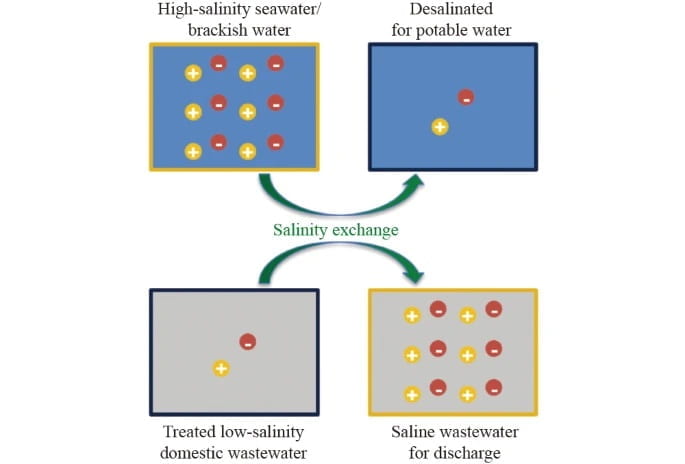
Jarin, M., Dou, Z., Gao, H., Chen, Y., & Xie, X. (2023). Salinity exchange between seawater/brackish water and domestic wastewater through electrodialysis for potable water. Frontiers of Environmental Science & Engineering, 17(2), 16.
The study introduces a concept called “salinity exchange” that aims to address global potable water shortages. This method involves transferring salts between seawater or brackish water and treated wastewater, resulting in desalinated seawater suitable for drinking. The process was demonstrated using electrodialysis and was successful under various conditions. In laboratory tests, the salinity exchange electrodialysis (SEE) systems produced high-quality desalinated water with low energy consumption. The study also explored the challenges of scaling up this technique using real water sources. Learn more

